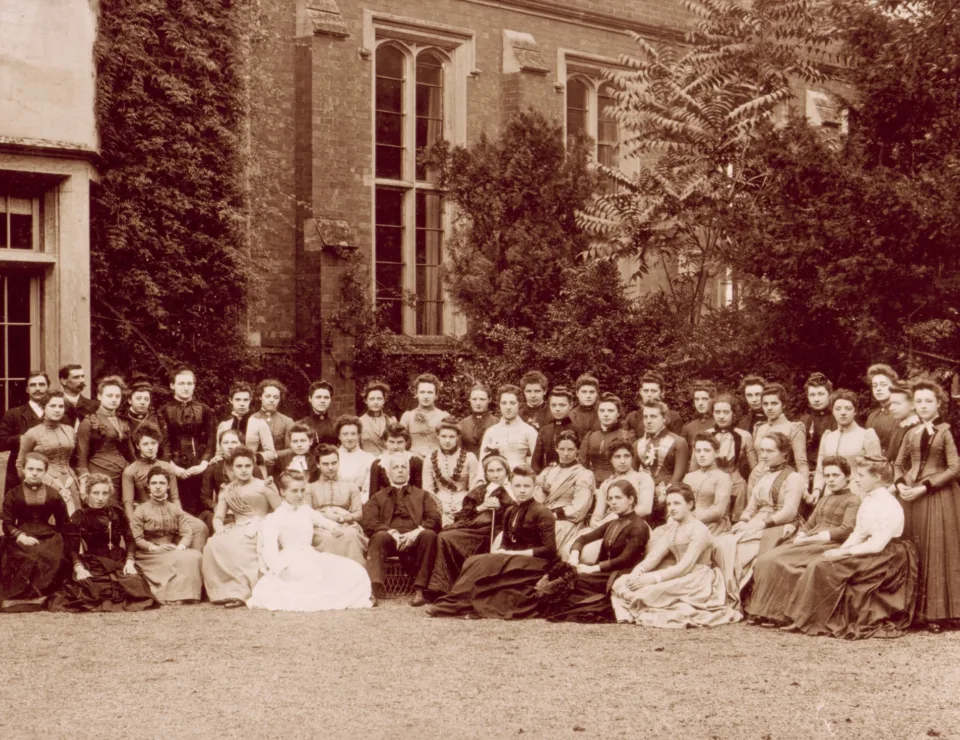Where it all began
The first attempt to open an educational institution on the current site in uphill Lincoln came in 1842 when a teacher training school for men was founded, but this closed in 1853 due to lack of interest from prospective students; the city lacked major network rail connections and the elementary teaching profession was, at this point, more attractive to women than men.
A second and more enduring effort was made in 1862, when the Lincoln Diocesan Training School for Mistresses was established, with support from the Bishop of Lincoln. Our current university traces its origin back to this moment and is therefore the representative of over 160 years of continuous dedication to excellence in education at the heart of Lincolnshire.
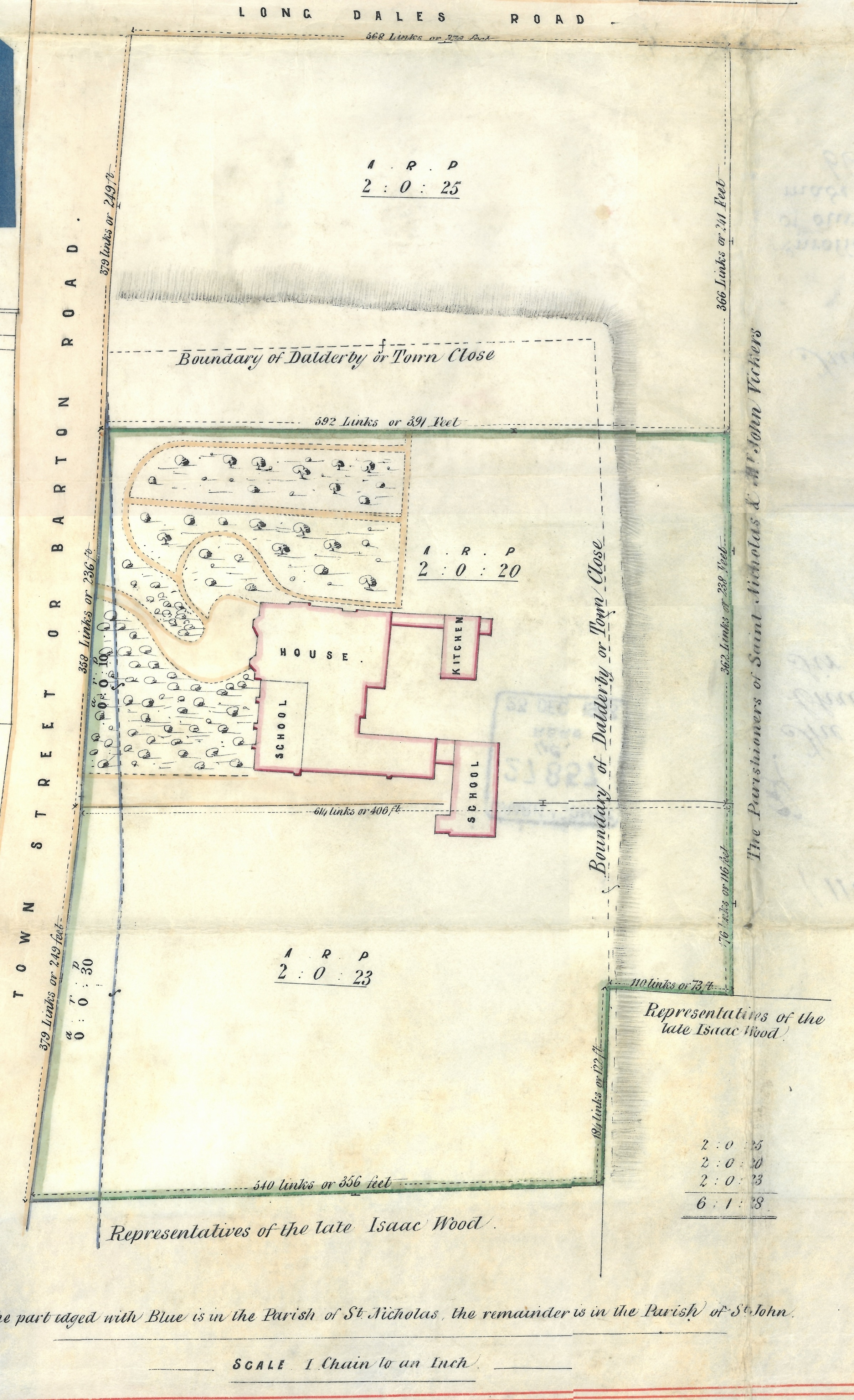
The founding Trust Deed defined its mission as being that of training mistresses for Church of England elementary schools. Students had to learn the 39 Articles of Religion and pass biblical exams. The initial curriculum included arithmetic, grammar, school management, penmanship, sewing, and domestic economy but this was greatly expanded into arts and sciences as the century progressed.
The school was soon renamed Lincoln Diocesan Training College. The first cohort to graduate from the College numbered 17 students and the number of attendees remained around this level until the 1890s as the intention was to foster a close-knit, family-like environment. The early college was an austere affair, even for the period. The buildings contained a dedicated lecture hall, classroom and dormitory but no common area, no easy chairs, no chapel and no dedicated bathing room. The dormitories were unheated and independent study was effectively prohibited. The early life of the college was one of long, collective study and hard physical work, with students taking on cleaning, housekeeping and duties in the kitchen garden. It was a tough and controlled, paternalistic environment, but ultimately, according to students’ own memoirs, a productive and happy one.
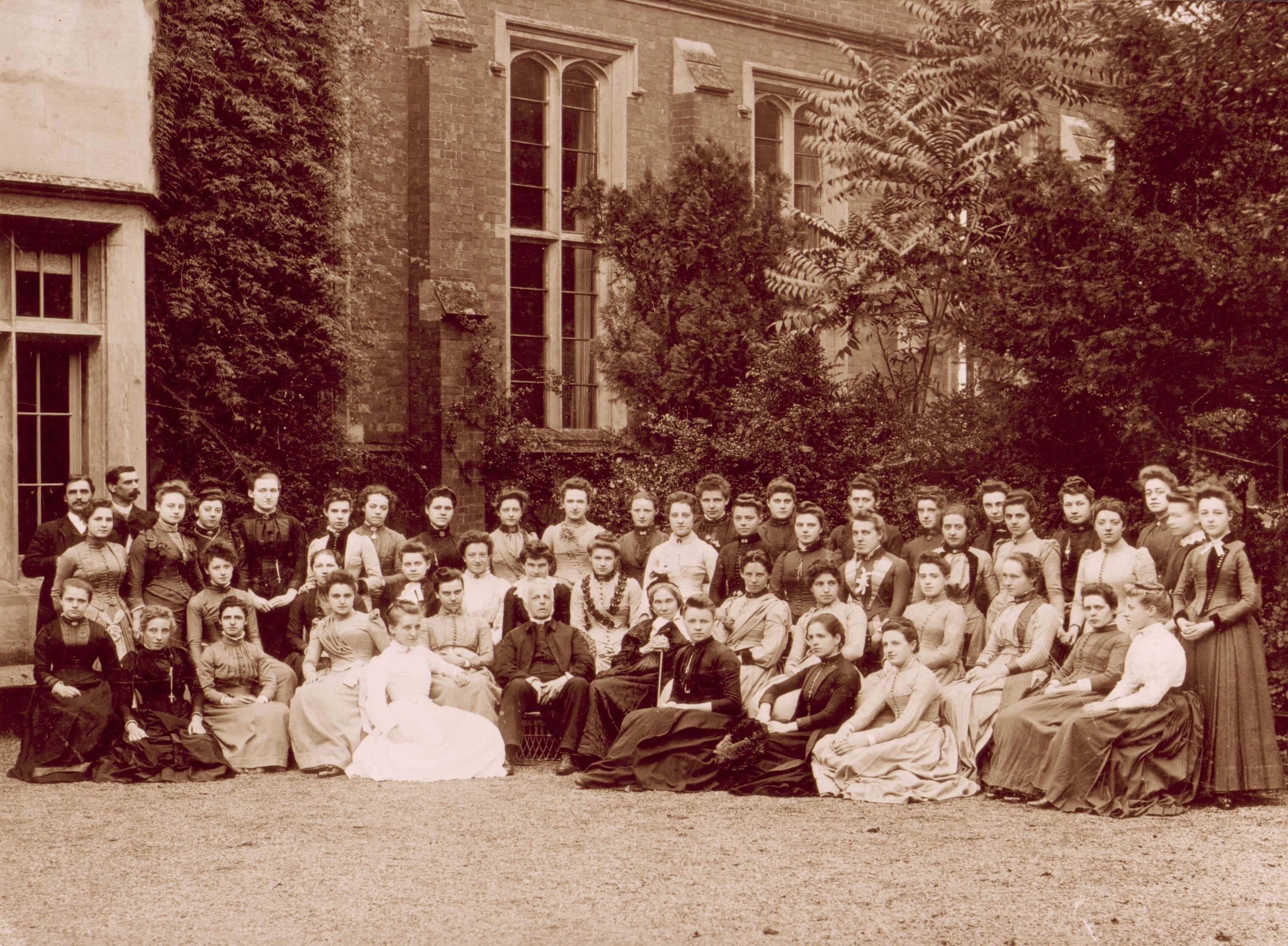
The first principal of the College was Canon Hector Nelson, who cultivated and celebrated a small-scale, hard-working, paternalistic environment at Lincoln during his long tenure (1862-92), and resisted pressures to expand, preferring to be highly selective with applicants.
The Chapel
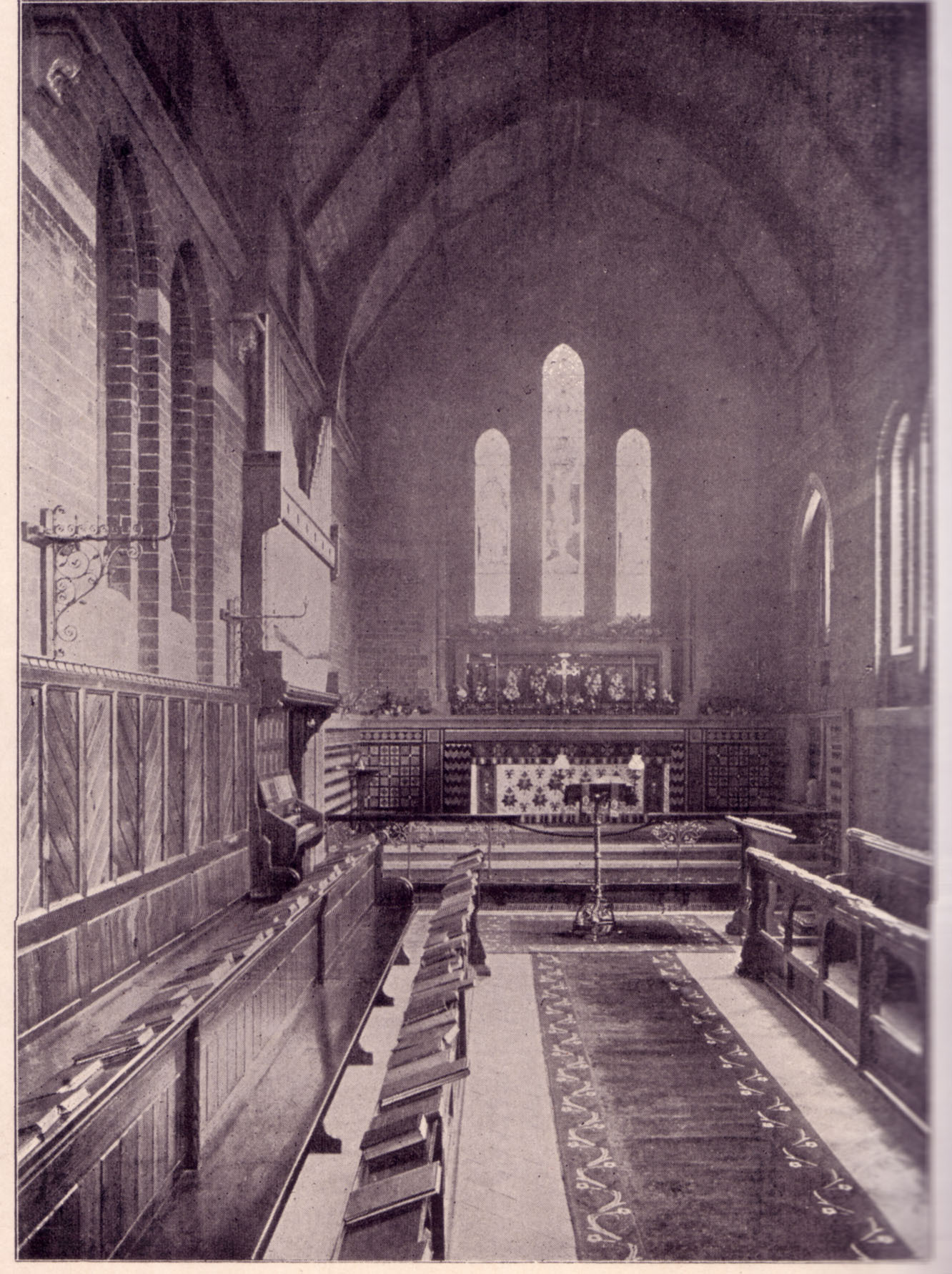
The first expansion of the College site occurred in 1870-71 with the construction of a dedicated chapel to underline its Anglican identity and provide a dedicated space for prayers.
The furnishings for the Chapel continued to be added long into the twentieth century. There were multiple charity events and donations that initially raised funds for the altar (donated by Canon Nevile), organ, carpets and linens (Canon Nelson’s family), candlesticks (Bishop Wordsworth), vases, altar accoutrement, stained glass windows, lectern and various brass panel dedications.
The first of the brass panel dedications was installed in 1889 after the passing of Miss Sophia Smith, LDTC governess since 1869 who became blind in 1884. Another notable memorial, the Chapel lectern, honours Miss Margaret Elwell, an 1873 student who stayed on as a staff member at LDTC for 39 years. The lectern, that remains in situ today, was made by Margaret's great nephew and unveiled at a memorial service in 1938 after her death in 1937.
Another testament to the strong traditions and loyalties that LDTC inspired was the practice of graduating cohorts ‘gifting a window’ for the chapel, which occurred on a yearly basis from the end of the nineteenth century and morphed into annual acts of charitable giving to the institution by the Old Students’ Association (OSA) and continued into the 1990s.
Into the 20th century
Changing times, technologies and living standards led government inspectors to demand improvements in the physical comfort and hygiene standards of the site. A cold water tap upstairs, a designated bathroom with hot water, heating in the dormitories and connection to the city’s main sewerage occurred by 1883.
When Canon Nelson resigned in 1892, a proposal to replace him with a Lady Superintendent was defeated by ten votes to four in the Committee of Management and so his replacement was Canon A. W. Rowe who embarked on a series of ‘modernisations’. First was the laying out of recreation grounds and discovery of an ancient Roman wall on site. This was followed by the creation of a college library and a Student Common Room.
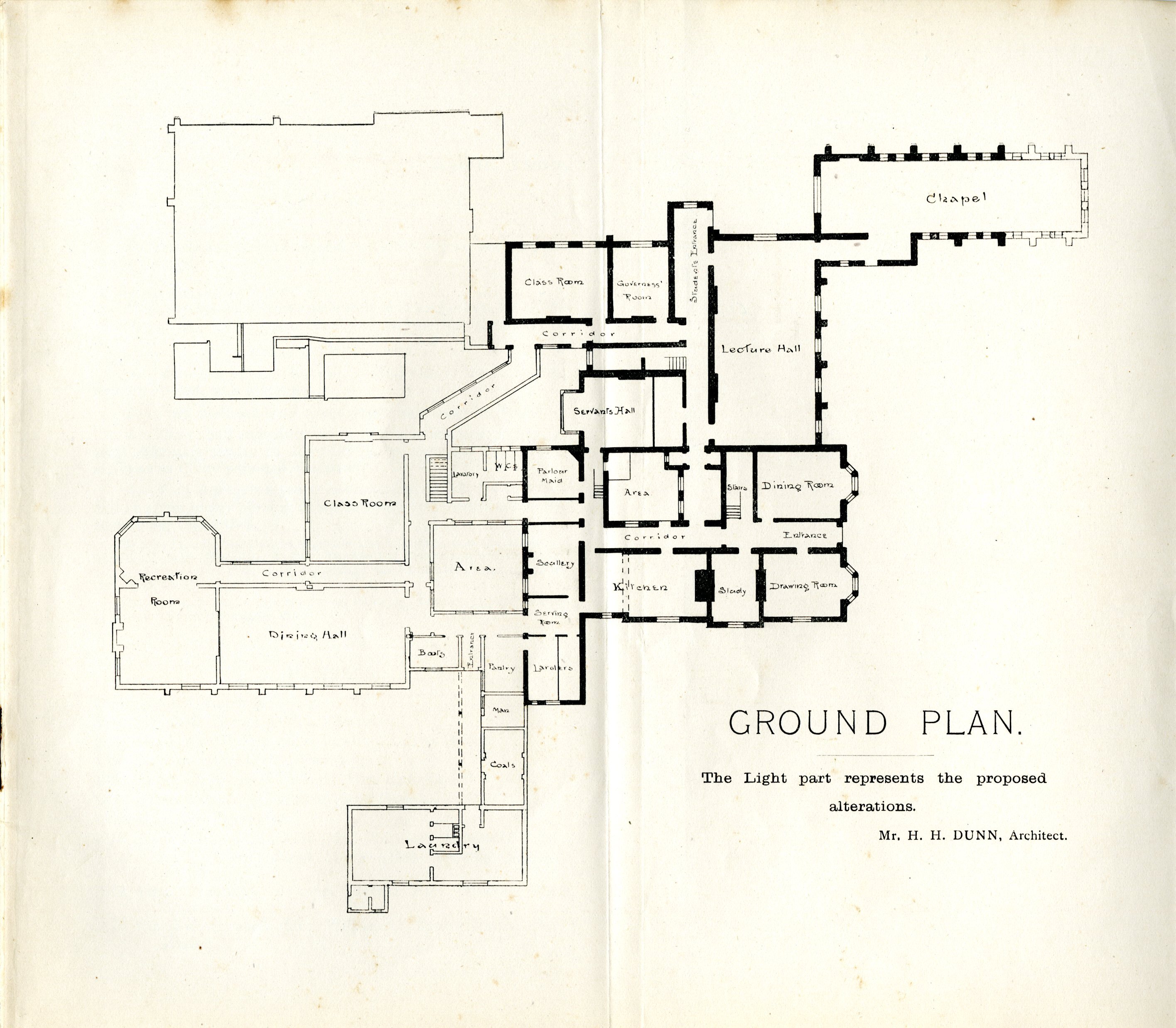
In 1901 it was decided to double resident student numbers and expand the physical site as the College was massively oversubscribed and biased towards accepting local pupils at a time when the government and society were demanding significant expansions in national education provision.
Extensive plans were commissioned to create a new dining hall and ‘recreation’ room with additional accommodation, an expansion to the Chapel and a new laundry. Few elements of the original site were left untouched. The opening of the new building represented a new chapter in the history of the institution.
In recent years

Further landmarks followed as 1966 saw the launch of the first B.Ed. degree programme; University College status was awarded in 2006, and full University title in 2012.
The University has grown many times over in terms of student numbers and architectural footprint and welcomes local and international students. It offers a broad range of arts, humanities and social science courses beyond teacher training and continues to uphold the original vision and values of a close-knit, family-like environment dedicated to hard-work, liberal values and academic excellence.
In 1960, the first cohort of 115 students who would follow a three-year training course were admitted, along with the first male students who were non-residential. These men were ‘older or specifically qualified’ and took a two-year shortened course designed to address a shortfall of newly qualified teachers in 1962. A bespoke ‘male students wing’ was opened to accommodate them in 1966.
On the centenary of its founding, in 1962, Lincoln Diocesan Training College was renamed Bishop Grosseteste College in honour of the 13th century Bishop of Lincoln, Robert Grosseteste. A history of the college was written to commemorate the first 100 years, by D. H. J. Zebedee.
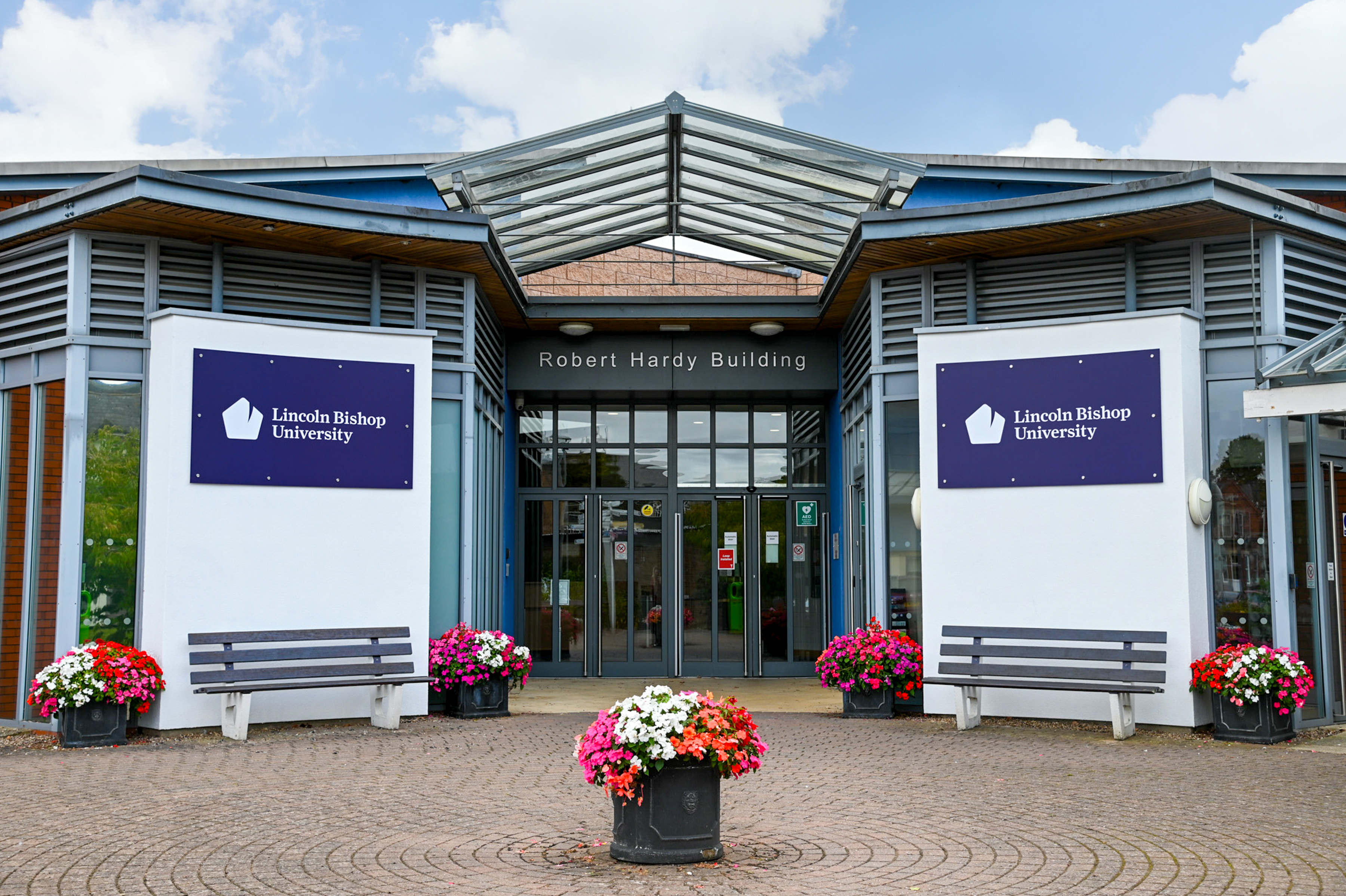
Appendix
The Principals of the College (with dates in post) and key structural changes:
- Rev. Canon Hector Nelson (1862-92)
- Rev. A. W. Rowe (1892-1912) - a Lady Superintendant was proposed in 1892 but the Committee of Management rejected it.
- 1916: election of the first female members to the Committee of Management, at the insistence of the Board of Education. They are not voting members
- Miss Winifred Todhunter (1912-1919) – appointed Principal after Board of Education overruled the Committee of Management to insist on appointment of a female principal.
- Miss Florence Exton, M.A. (1919-1923) – died in office.
- Miss Constance Stewart, M.A. (1924-49)
- 1942-43: women become voting members on Board of Management
- Miss E. L. Butcher, M.A. (1949-64)
- 16 March 1953: new constitution and ownership structure approved
- 1957: first permanent male teaching staff appointed since the 19th century
- 1960: first male students admitted
- Miss Joyce E. Skinner, M.A. CBE (1964-1975)
- Prof. Leonard G. Marsh OBE (1975-1996)
- Eileen Baker (1996-2003)
- Muriel Robinson (2003-2012)
Vice Chancellors of Bishop Grosseteste University, then Lincoln Bishop University (2025 onwards):
- Muriel Robinson (2012-2013)
- Peter Neil (2013-2023)
- Karen Stanton (2023-24)
- Andrew Gower (2025-)
